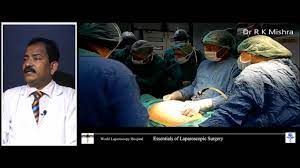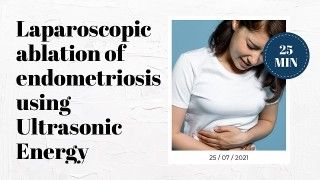ICG and Infrared Ureteric Catheter in Challenging Total Laparoscopic Hysterectomy with Fibroid
Add to
Share
1,541 views
Report
2 years ago
Description
Introduction: Total Laparoscopic Hysterectomy (TLH) is a minimally invasive surgical procedure used for the removal of the uterus, often performed to treat conditions such as fibroids. Fibroids, or uterine leiomyomas, are noncancerous growths that develop in the wall of the uterus and can cause various symptoms, including heavy menstrual bleeding, pelvic pain, and pressure. In challenging TLH cases where fibroids are present, it's crucial to ensure the safety of nearby structures, including the ureters, which are responsible for carrying urine from the kidneys to the bladder. The use of intraoperative tools to protect the ureters during TLH is of paramount importance. This comparative analysis explores the effectiveness and advantages of two such tools: Indocyanine Green (ICG) and Infrared Ureteric Catheters, in safeguarding the ureters during TLH procedures involving fibroids. ICG (Indocyanine Green): ICG is a fluorescent dye that is intravenously injected, and it fluoresces when exposed to near-infrared light. Surgeons use near-infrared imaging systems to visualize the dye, allowing them to see the blood flow and perfusion in real time. This technology has been increasingly used in various surgical fields, including gynecology, to identify structures like the ureters. Infrared Ureteric Catheter: An infrared ureteric catheter is a medical device specifically designed to locate the position of the ureters during laparoscopic surgeries. It is inserted into the ureter and emits infrared light, which can be detected by laparoscopic cameras, aiding the surgeon in identifying the ureters' exact location. Comparative Analysis: Visualization: Both ICG and infrared ureteric catheters provide real-time visualization of the ureters during TLH procedures. ICG offers the advantage of visualizing the blood flow and perfusion of the ureters. This can be particularly helpful in cases where fibroids may cause distortion or compression of the surrounding blood vessels. The catheter, on the other hand, provides direct anatomical location information and can be more stable in guiding the surgeon. Safety: The primary goal of both ICG and infrared ureteric catheters is to prevent inadvertent ureteral injury during TLH. Their use has been associated with a reduction in ureteral injuries, a potentially severe complication. The choice between the two methods depends on the surgeon's preference and the specific circumstances of the surgery. Cost and Availability: ICG requires the availability of a near-infrared imaging system, which might not be universally accessible in all medical facilities. In contrast, infrared ureteric catheters are a specialized instrument but do not depend on expensive imaging systems. The choice may also depend on the resources available in the surgical setting. Learning Curve: The use of ICG and infrared ureteric catheters requires some training and familiarity with the technology. Surgeons and their teams need to be proficient in utilizing the chosen method effectively. Total Laparoscopic Hysterectomy (TLH) is a minimally invasive surgical procedure commonly employed for the removal of the uterus, often necessitated by conditions like uterine fibroids. These noncancerous growths within the uterine wall can lead to a range of distressing symptoms, prompting surgical intervention. In complex TLH cases involving fibroids, one of the critical considerations is safeguarding the ureters, the ducts responsible for transporting urine from the kidneys to the bladder. This detailed analysis delves into the efficacy and comparative advantages of two intraoperative tools, Indocyanine Green (ICG) and Infrared Ureteric Catheters, in protecting the integrity of the ureters during TLH procedures with fibroids. Conclusion: The choice between ICG and infrared ureteric catheters in challenging TLH procedures with fibroids depends on several factors, including the surgeon's experience, the availability of resources, and the specific patient case. Both methods have been shown to be effective in preventing ureteral injury, and the decision should be made on a case-by-case basis. This comparative analysis highlights the importance of selecting the most appropriate tool to ensure the safety and success of TLH procedures in challenging cases involving fibroids. Further research and experience will continue to refine our understanding of the benefits and limitations of these technologies.
Similar Videos





